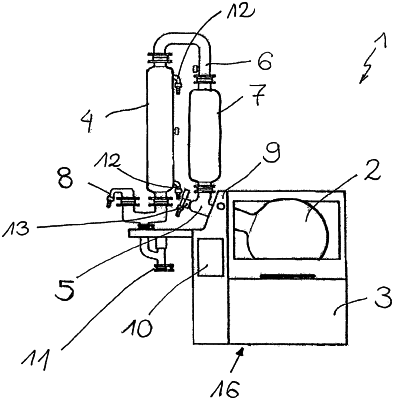| CPC B01D 3/085 (2013.01) [B01D 3/42 (2013.01); B01D 19/0063 (2013.01); B01D 19/02 (2013.01)] | 15 Claims |

|
1. A laboratory device for evaporating a substance to form an evaporated substance, the laboratory device having:
an evaporation flask for receiving the substance to be evaporated;
a condenser for condensing the evaporated substance;
a vapor passage for passing through the evaporated substance, which vapor passage is arranged in a vapor path between the evaporation flask and the condenser;
a detection unit for foam detection, which detection unit is provided outside of the vapor passage and/or of the evaporation flask,
wherein the detection unit is provided as a separate part that can be mounted on the laboratory device and removed from the laboratory device and wherein the detection unit is connectable to the laboratory device so as to be movable between a first installed position, which is a measuring position for detecting foam and a second installed position at a distance from the measuring position; and
a foam reduction mechanism, comprising:
a gas inlet valve adapted to control a supply of gas into the evaporation flask; and
a control unit adapted and configured to receive a signal from the detection unit indicating foam formation, and in response to control the gas inlet valve to allow gas into the evaporation flask, increasing the pressure therein and reducing accumulated foam.
|